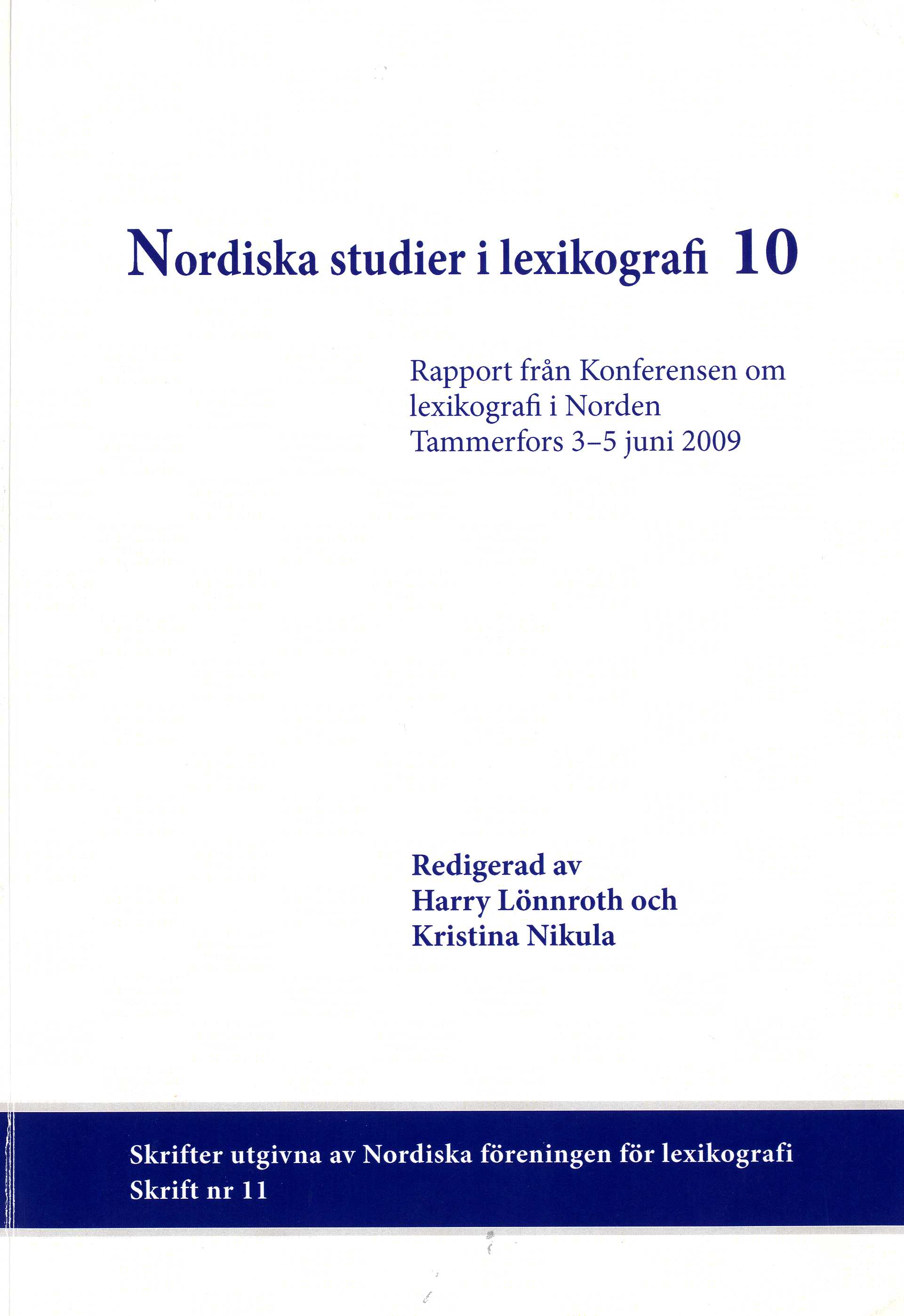Explicit och implicit information i tvåspråkig lexikografi
Nøgleord:
relationen grammatik–lexikon, forskningsbaserad tvåspråkig lexikografi, lexikografihistoria, prepositionsstrykningResumé
In modern linguistics, the distinction between grammatical and lexical description has usually been sharp. As a consequence of the concentration on the grammar model in linguistic theory, the role of the lexicon has tended to become implicit, not to say undeveloped or trivial. In this paper, we give a survey of the evolution of the Swedish lexicographical tradition. Four distinct lexicographic lines of development are distinguished: the Latin, the patriotic, the bilingual, and the monolingual type of lexicography. A brief sketch of the early lexicographers’ view on grammar and lexicon is given and, in particular, the effort by Abraham Sahlstedt to combine the two perspectives in a dictionary and a grammar. It has now become obvious that his approach was an isolated occurrence. The dichotomy between the grammatical and the lexical description can cause interesting linguistic problems to be completely overlooked. One such problem is discussed in the paper, viz. the possibility of deleting prepositions in Swedish. It is suggested that the monolingual description would gain by a strengthened and explicit lexical and semantic dimension in grammar and vice versa. Furthermore, an explicit, contrastive perspective on grammatical and semantic features in the object languages would improve modern bilingual lexicography.
Downloads
Publiceret
Citation/Eksport
Nummer
Sektion
Licens
Nordisk Forening for Leksikografi/NSL og forfatterne.





